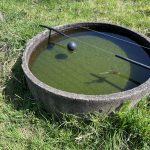Myth: Natural means “safe”
In the quest for sustainable agriculture and eco-friendly practices, there’s a prevailing notion that anything labelled “natural” is inherently safe for the environment. This belief extends to fertilisers and pesticides derived from natural sources. However, in reality, the truth is far more nuanced. While natural fertilisers and pesticides may seem benign compared to their synthetic counterparts, their indiscriminate use can still pose significant risks to the environment. Let’s delve into this myth and uncover the reality behind it.
The appeal of natural solutions
Natural fertilisers and pesticides have gained popularity in recent years, driven by a growing awareness of the environmental impact of conventional farming practices. Derived from organic materials such as compost, manure, bone meal, or plant extracts, these products are touted as safer alternatives that nourish soil health and promote biodiversity. Their appeal lies in their perceived compatibility with nature, often leading consumers to believe they’re entirely harmless to the environment.
What is “natural”?
The term “natural” often evokes images of pristine landscapes, untouched by human intervention, where ecosystems thrive in harmony. However, defining what is truly “natural” in the context of agriculture is complex. In a broad sense, natural refers to substances or processes that occur in the environment without human manipulation. This can include organic materials like compost, manure, and plant extracts.
However, the mere presence of a substance in nature doesn’t guarantee its safety or sustainability in agricultural applications. For example, arsenic and mercury are naturally occurring elements, but they are highly toxic. This highlights the importance of being mindful of ‘greenwashing’ – marketing tactics that portray products as environmentally friendly without sufficient evidence. Not all “natural” products are created equal, and their impact on the environment can vary significantly depending on their source, processing methods, and application rates.
The reality check
While natural fertilisers and pesticides may break down more easily than synthetic chemicals, their improper use or overuse can still have detrimental effects on ecosystems.
Here are some key factors to fertiliser usage:
Nutrient Imbalance: Applying excessive amounts of natural fertilisers can lead to nutrient imbalances in the soil, disrupting its delicate ecosystem. This imbalance can result in nutrient runoff, where excess nitrogen and phosphorus wash into water bodies, triggering algal blooms and oxygen depletion—a phenomenon known as eutrophication.
Soil Degradation: Repeated applications of certain natural fertilisers, such as high-nitrogen manure, can degrade soil quality over time. Excessive nitrogen can acidify the soil, inhibit microbial activity, and compromise its ability to support plant growth in the long term.
Pest Resistance: Natural pesticides derived from botanical extracts or microorganisms are not immune to the development of resistance in target pests. Over-reliance on these products can lead to the emergence of resistant pest populations, necessitating stronger and potentially more harmful control measures in the future.
Water Contamination: Water contamination from agricultural runoff is a significant environmental concern, regardless of whether the contaminants are natural or synthetic in origin. While natural pesticides may undergo biodegradation more rapidly than synthetic counterparts, their persistence in the environment can still contribute to water pollution and ecological harm.
The path to responsible agriculture
So, how can we reconcile the benefits of natural fertilisers and pesticides with their potential environmental risks? The key lies in adopting a holistic and science-based approach to farm management:
Carefully Considered Ingredients: Before applying natural fertilisers and pesticides, it’s crucial to thoroughly evaluate their ingredients and composition. While these products are derived from organic sources, not all components may be equally beneficial or safe for the environment. For instance, certain plant extracts or animal by-products may contain compounds that pose risks to non-target organisms or aquatic ecosystems. By scrutinising the ingredients and understanding their potential effects, farmers can make informed decisions about product selection and application methods, minimising environmental impacts while maximising effectiveness.
Precision Application: Farmers should carefully calibrate the application of natural fertilisers and pesticides based on soil tests, crop requirements, and environmental conditions. Precision agriculture techniques can minimise waste and environmental impact.
Soil Conservation Practices: Implementing soil conservation practices, such as cover cropping, crop rotation, and minimum tillage, can enhance soil health, mitigate erosion, and improve nutrient retention. Healthy soils are better equipped to utilise natural fertilisers efficiently and resist degradation over time.
Continuous Monitoring and Adaptation: Regular monitoring of soil health, water quality, and pest populations is essential for detecting potential issues early and adjusting management practices accordingly.
While natural fertilisers and pesticides offer promising alternatives to conventional agrochemicals, they are not without environmental consequences. By dispelling the myth of their inherent safety and adopting responsible agricultural practices, we can harness the benefits of natural inputs while safeguarding the health and resilience of our ecosystems. In the journey towards sustainable agriculture, knowledge, diligence, and innovation are our greatest allies.



